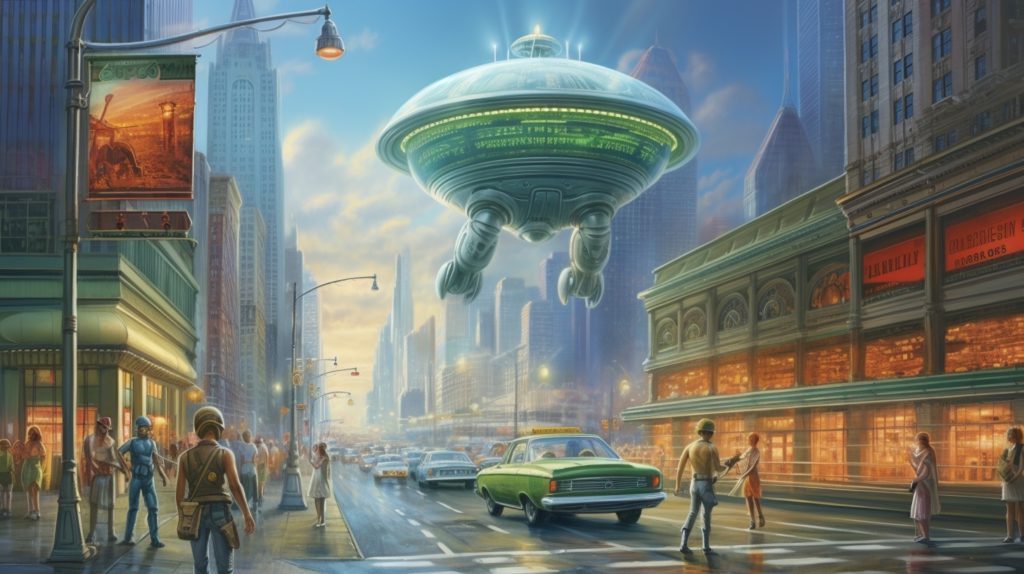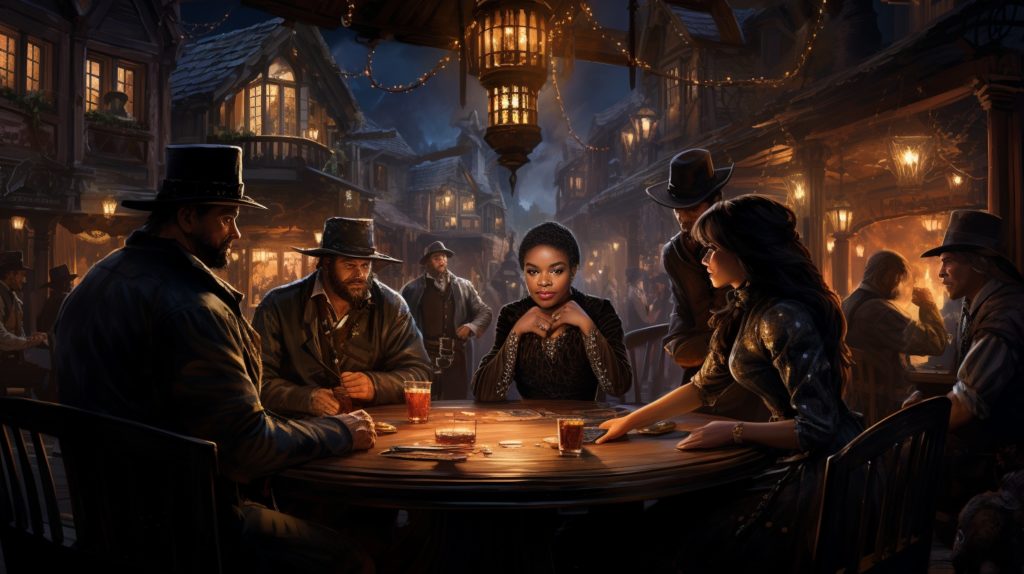
As a science fiction author focused on weird westerns, for me, it’s essential to research the past. My fictional playground, which I call the Creedverse, is the setting for my series, The Adventures of Bodacious Creed. It’s an alternate timeline where, in the early 1870s, the discovery of how to access the luminiferous ether led to incredible new technologies.
So, why is it so important to research the past for an alternate timeline? Let’s explore.
The Foundation of Authenticity When Writing Historical Science Fiction
Historical science fiction is a blend of factual history and imaginative speculation. The challenge lies in weaving these elements seamlessly, and for that, research is indispensable. It provides the scaffolding on which we can drape our imaginative worlds. For example, in the Creedverse, I delve into the 1870s setting of Santa Cruz and San Francisco, a period rich in history and culture. Getting the details right about the architecture, language, and societal norms of the time adds authenticity to the narrative, touches that make the fantastical elements–like resurrected zombies and steam-powered inventions–more believable and grounded. The historical underpinning imbues the fictional world with a sense a tangible sense of place and time that lets readers fully engage with the story.
Balancing Fact and Fiction

The key to writing historical science fiction well is finding the right balance between historical accuracy and creative freedom. Research helps in understanding the era: the technology, the politics, the people’s way of life, and cultural attitudes. From there, it’s a dance between what was and what could have been. In creating the Creedverse, I respected historical timelines but introduced technology, like lightbulbs, flashlights, and refrigerators, earlier than they appeared in our world. Plus, there are quite advanced robots with a western aesthetic. This interplay creates a familiar yet intriguingly different world for my readers. The act of balancing historical facts with creative elements allows for a narrative both grounded in reality and elevated by imagination.
Avoiding Anachronisms
Anachronisms can jolt a reader out of the story. Meticulous research helps avoid such pitfalls. When I write about the streets of 1870s San Francisco, I need to ensure that everything from the street names to the sorts of businesses reflects that era. For instance, a simple reference to a modern-day object or a phrase that wasn’t in use at the time can disrupt the narrative’s integrity. Research guards against these errors, ensuring that the world I build is internally consistent, even when it’s speculative. By painstakingly checking each historical detail, I can create a world that resonates with verisimilitude, keeping the reader fully immersed in the era and story I am crafting.
That said, yes, my books have a few small anachronisms, though they’re things that modern readers wouldn’t have realized didn’t exist yet. These mistakes, I chock up to the Creedverse being an alternate timeline where some surprising things appeared earlier.
Cultural Sensitivity and Representation

In historical sf, we’re often dealing with times that had different social norms and attitudes. Research becomes crucial in portraying these aspects with sensitivity and accuracy. It’s fine for characters to have attitudes reflecting the times, but the author needs to have more sensitivity. This is especially important when writing about real historical figures or events. In the Creedverse, for instance, while I reimagine many aspects of the Old West, I strive to represent the era’s social dynamics, including gender roles and cultural diversity, in a manner that is respectful and informed. The protagonist of the first series, James “Bodacious” Creed, has quite progressive attitudes. Understanding the historical context of various social issues allows for a more nuanced and respectful portrayal of different cultures and communities, enriching the narrative with diverse perspectives and experiences.
Inspiration and Innovation
Research isn’t just about getting facts straight; it’s also a gold mine of inspiration. While exploring the history of the Wild West, and especially San Francisco during the time, I’ve stumbled upon fascinating tidbits that have sparked entire plotlines in the Creedverse. Because of my research, historical figures appear in the books, and much more. The ‘what if’ questions that arise from actual historical events or technologies lead to the most exciting aspects of sf storytelling. Delving into historical texts and records can unveil hidden stories and forgotten inventions, which become the seeds for plot ideas, characters, and tense conflicts. These discoveries not only fuel the imagination but also lend a sense of wonder and possibility to the narrative, bridging the gap between past and future.
For aspiring writers of historical sf and fantasy, I cannot stress enough the importance of research. It’s what makes your world believable and your story interesting. The process is time consuming, but it’s also incredibly rewarding. As you peel back the layers of history, you’ll find a wealth of material to inspire and substantiate your creative vision. Remember, while we, as sf authors, have the liberty to bend history, our stories gain depth and resonance from the threads of truth that run through them. So, embark on this journey with diligence and enthusiasm, and you will find that your historical sf narratives will not only engage but also enlighten your readers.
“You should write not what you know, but what you can find out about.” ~ Robert J. Sawyer